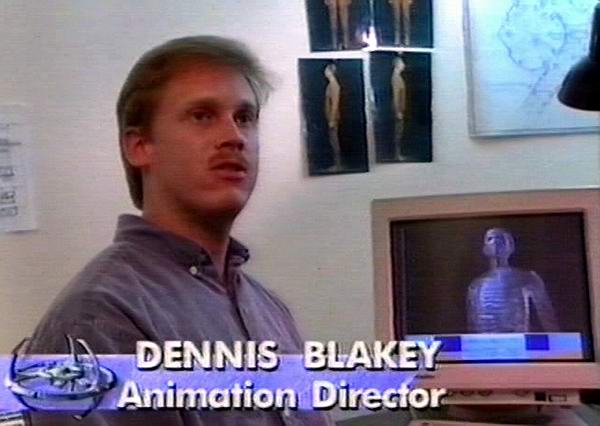
Title
Date
Description
Multiple Available
There are multiple entries on this date. You can modify the date range below to see them all.
California Institute of the Arts Computer Lab
Established Date: Sept. 1, 1986
- All
- software
- JPL
- CalArts
- California Institute of the Arts
- Prisms
- Digital Domain
- Mojo
- Star Trek
- Deep Space Nine
- Apollo 13
- Project Galileo
- Ultimatte
- Tron Legacy
- Storm
- CAPS
- Home on the Range
- Dennis Blakey
- Disney
- Wavefront
- Houdini
- Side Effects Software
- Cyberware
- 3D Scanning
-
Fall of 1986, a large crate arrived at the California Institute of the Arts in Valencia, California. It contained a half-refrigerator sized Silicon Graphics IRIS 3020 workstation, and one copy of Wavefront 3D Advanced Visualizer software...
-
Fall of 1986, a large crate arrived at the California Institute of the Arts in Valencia, California. It contained a half-refrigerator sized Silicon Graphics IRIS 3020 workstation, and one copy of Wavefront 3D Advanced Visualizer software. The system and software was provided by a grant. I believe it was around $100,000 for the total system. Vibeke Sorensen was the noted Computer Graphics professor at CalArts who was instrumental in obtaining the grant. Dale McBeath was an instructor of the department. …
First Wavefront 3D system at CalArts -
 Wavefront
Wavefront -
 Dennis Blakey
Dennis Blakey -
 Cyberware
Cyberware
First Wavefront 3D system at CalArts
Fall of 1986, a large crate arrived at the California Institute of the Arts in Valencia, California. It contained a half-refrigerator sized Silicon Graphics IRIS 3020 workstation, and one copy of Wavefront 3D Advanced Visualizer software. The system and software was provided by a grant. I believe it was around $100,000 for the total system. Vibeke Sorensen was the noted Computer Graphics professor at CalArts who was instrumental in obtaining the grant. Dale McBeath was an instructor of the department. Dennis Blakey (author) was a student of CalArts and teaching assistant for the Wavefront classes. The computer lab was know as F105 by it's location in the building. The SGI and Wavefront provided real time transformations of models created in Wavefront's model program, animated in the channel driven "Preview" program and then rendered. Compositing was a comand line A over B "comp" program. At the time, it all seemed quite amazing as the school previously had pc "cubicomp" systems made of an IBM pc and frame buffer that did not have the real time transformation and sophistication of the SGI graphics. First classes for Wavefront at CalArts began in January of 1987. Dean Ed Emshwiller, a noted independent filmmaker and Dean of the film school attended. One could write c programs to generate ascii obj files, the model file format of Wavefront, and write command stacks to load into the model or preview programs. That proved to be very handy indeed to add functionality. Wavefront was the origin of "obj" files, unknown if that format existed previously. That simple obj file format is still in use today with modern 3D programs such as Maya and Houdini from Autodesk (Alias/Wavefront) and Side Effects Software.
Fall of 1986, a large crate arrived at the California Institute of the Arts in Valencia, California. It contained a half-refrigerator sized Silicon Graphics IRIS 3020 workstation, and one copy of Wavefront 3D Advanced Visualizer software...
